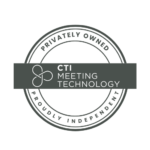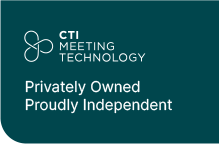Content is the backbone of every scientific conference. Ensuring a diverse and high-quality selection of abstracts is one of the organizers’ primary concerns. Abstract management is the process of selecting those papers that will be presented at the meeting. Collecting, reviewing, and presenting abstracts can be lengthy and exhausting.
Even smaller conferences often handle hundreds of submissions and need a dedicated team to manage this critical part of the meeting. Organizers need ways to make abstract management more efficient while maintaining submission quality.
Keep reading to discover some tips that will make abstract management – and your life – easier:
The Role of Abstracts in Scientific Conferences
An abstract is a summary of a larger research work or academic paper. Abstracts play an essential role in scientific conferences, acting as the vehicle to share new insights and results at the conference. At the end of the day, one of the key objectives of scientific meetings is to gather experts from around the world to share insights and foster collaboration.
An effective abstract management process saves time and ensures high-quality abstracts are presented. This, in turn, attracts more attendees and keeps them engaged throughout the sessions.
Pre-conference Preparation and Establishing Deadlines
The meeting preparation starts months before the actual conference. Organizers must allocate enough time to prepare the submission process, including review time and notifications. Planning a conference comes with a lot of unexpected challenges, so trying to define processes as early on as possible is essential to guarantee smooth abstract management.
There is no fixed amount of time that you need in advance to start planning. It will all depend on the size of your conference, software, and available staff. But in general, at least 8 months before the conference is the sweet spot to start with preparations.
The first steps include defining conference topics and guidelines, ensuring all abstracts follow a similar structure, and enforcing word limits. When handling so many documents, organizers need a method to make it easier for reviewers. All abstracts should be written in the same language, follow a similar structure, adapt to word limits, and allow the same type of graphics.
Defining different conference topics will also ensure that all sessions have enough high-quality content to be presented at the meeting. Last but not least, make sure that all instructions are available and easily accessible to staff, submitters, and reviewers to avoid confusion during the submission and review processes.
Designing an Effective Call for Abstracts
There’s no point spending valuable time planning abstract submission if you don’t get any papers. Effective “call for abstracts” messaging is essential to attract quality content for your conference.
Design a powerful call for abstracts, highlighting the opportunity to present their research at your meeting, either orally or with a poster. Be precise when communicating deadlines and guidelines; you don’t want to miss valuable submissions because the rules were not communicated effectively!
Email is the most common and – for many professionals – the most convenient channel for promoting your call for abstracts. However, researchers and physicians often find their inboxes full of spam, so you should implement strategies to make your message stand out. A simple but powerful way to do this is by personalizing the email subject; no one will open a generic email!
Don’t forget about including other ways to promote your event. Include your call for papers in social media channels and on your website, and get in touch with department heads as well. Consider using paid media channels as well if your budget allows it. Diversifying your promotion strategy is essential to ensuring a successful abstract submission process. Again, researchers get invited to multiple conferences every year, and it takes time and effort to craft a compelling abstract. Ensure you highlight your meeting’s unique selling points and why the researcher can’t miss this opportunity.
Determining an Effective Review Process
After receiving hundreds – or even thousands – of abstracts, organizers need to filter out those that fail to meet the conference’s standards. The meeting’s time is limited; attendees will appreciate less but better content over too much content without substance.
In scientific conferences, submitted abstracts are usually peer-reviewed by experts in a relevant field. Organizers need to make sure to have enough experts for every topic to not overwhelm certain reviewers. Review management software can automatically assign abstracts to reviewers, checking for conflicts of interest and balancing the review load.
Clear review guidelines are essential for fair and efficient evaluation. Most of your reviewers will be volunteers, so be mindful of their time and don’t assign them more reviews than they can handle!
Communicating with Submitters Effectively
Even with clear guidelines, questions and challenges will arise during the submission process. Provide your submitters with a channel where they can seek help and receive prompt assistance.
Additionally, communicate any last-minute changes to all authors. Maybe you didn’t get as many submissions as expected and intend to extend the deadline, or you’ve adjusted the instructions. This is fine, but you must communicate these changes to offer all submitters the same opportunities and avoid confusion.
Building an Attractive Event Program
Congratulations, you have all the abstracts for your conference! Now it’s time to organize these presentations into a coherent and engaging program. The content must also be accessible for all attendees to discover new research and ideas.
Sure, you could print all accepted abstracts and collect them in a book for attendees to take home, but it wouldn’t be the most efficient (or eco-friendly) option. Many participants come from overseas, and a bulky abstract book can be a heavy addition to their luggage!
Thankfully, event software like CTI’s Abstract Management software allows attendees to view abstracts plus all extra files, such as posters, images, videos, etc., in the meeting platform. This is the most convenient way; users only need a device connected to the Internet to access all meeting content from anywhere.
Abstract Management Software: Key Features
Abstract submission is a long and complex process, but technology can significantly enhance efficiency. Good abstract management software includes an online submission portal, an automated review and selection process, communication tools, and data analytics for tracking submissions and trends.
A user-friendly platform reduces the need for assistance, freeing up organizers’ time for other tasks. Another must-have is centralized communication tools. Organizers no longer get lost in a sea of emails looking for a reply, and communications can be sent in bulk to all your submitters in just one click.
Listen to Feedback
Listening to feedback from submitters is crucial for improving the abstract submission process. By understanding their experiences and addressing their concerns, organizers can refine their approach for future conferences. Engaging with submitters and showing their input is valued fosters a positive relationship and contributes to the conference’s success.
Wrapping Up…
Streamlining the abstract submission process is crucial for the success of any scientific conference. It ensures that high-quality content is presented, attracts more attendees, and keeps them engaged throughout the event. The collaboration between organizers and submitters plays a vital role in this process.
Abstract management software provides the right solution to streamline the submission process and facilitate communication between all parties. At CTI, we have over 40 years of experience supporting scientific conferences worldwide. Discover the key features that make our abstract management software solution perfect for STEMM meetings, or book a call with us to discuss your specific needs.






